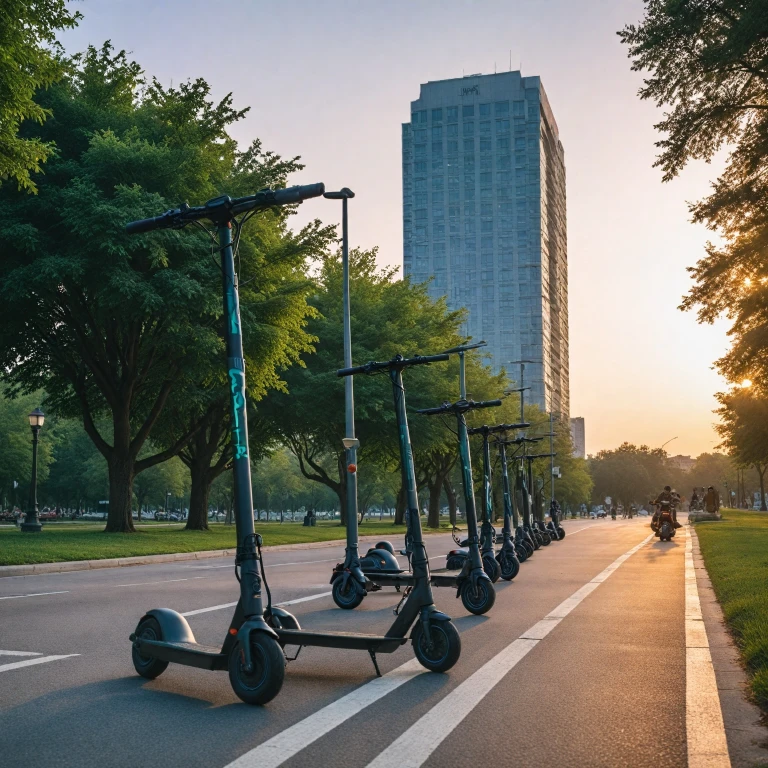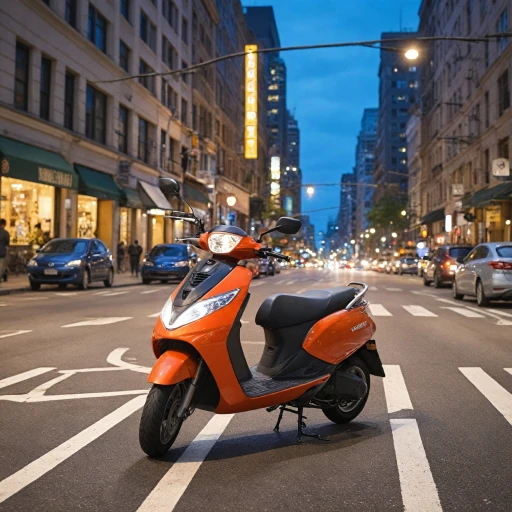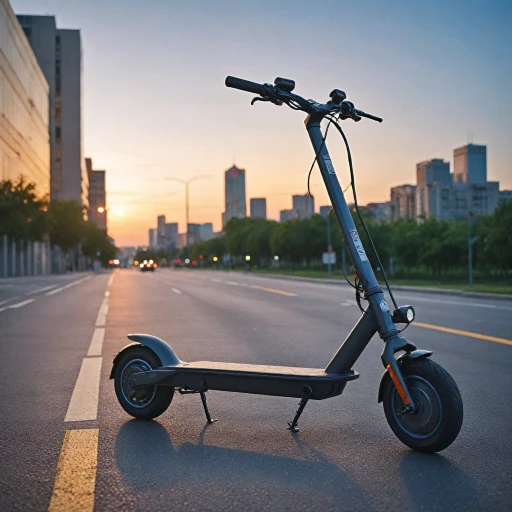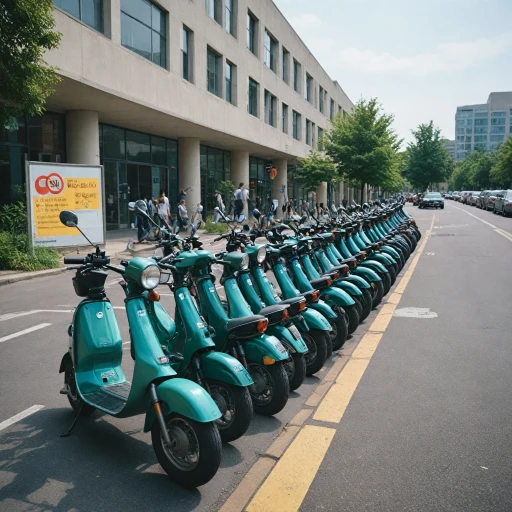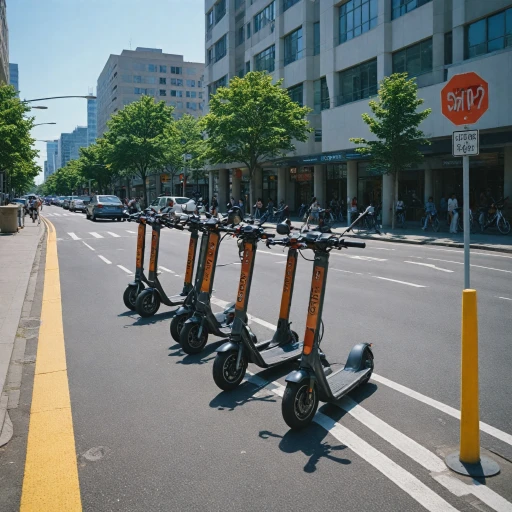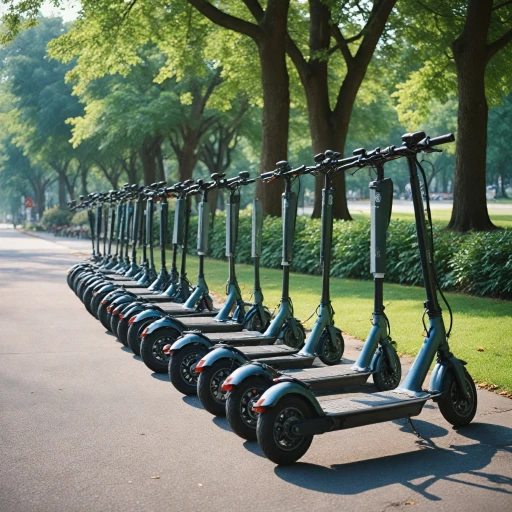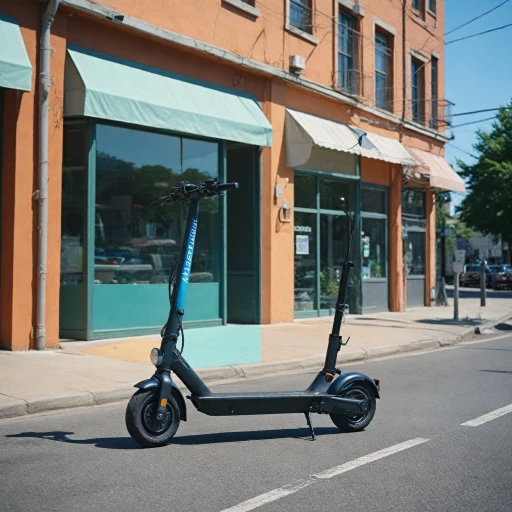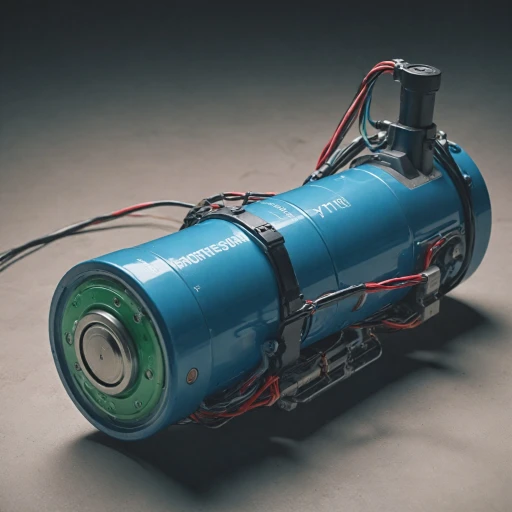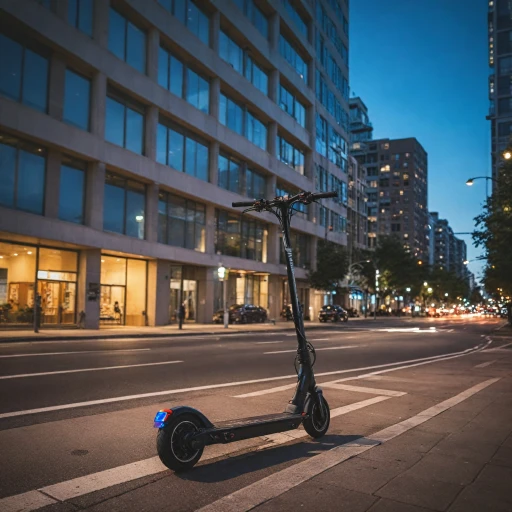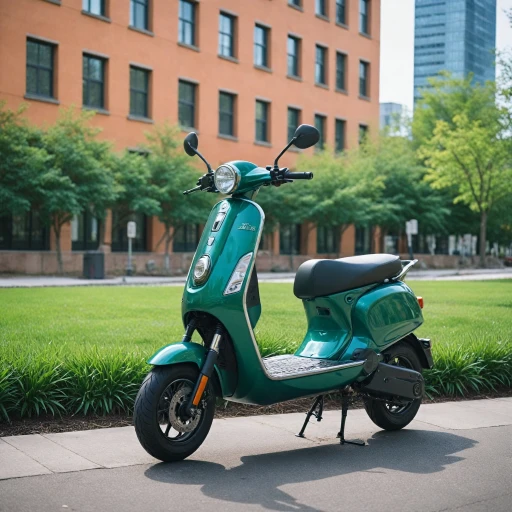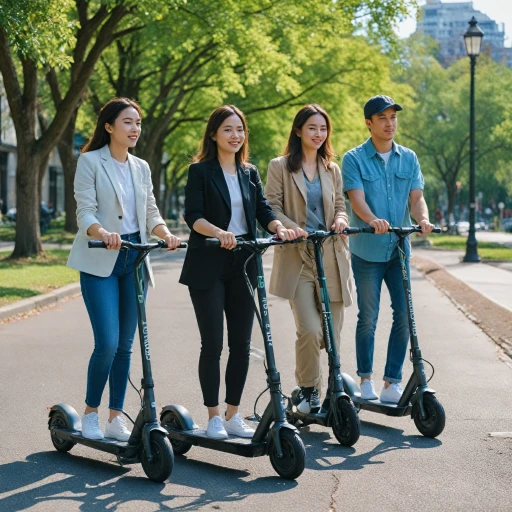
Types of Scooter Batteries
Different Varieties of Electric Scooter Batteries
When it comes to electric scooters, understanding the type of batteries that power these vehicles is crucial. There are several varieties that cater to the diverse range of scooters available in the market, impacting everything from price to mobility range.
The most common type you will encounter is the sealed lead acid (SLA) battery. These batteries are known for their affordability and widespread use in entry-level models. While they offer a regular price advantage and are group volt compatible, they also have some limitations in terms of weight and lifespan.
On the opposite end, we have lithium-ion batteries. Praised for their light weight and longevity, they are often found in premium models with a higher original price. Their ability to provide a greater range without frequent replacement is a point of pride for manufacturers. However, it's notable that the current price of these units can be considerably steeper than their SLA counterparts.
For those wanting to customize or upgrade, the market offers options for replacement batteries. It's essential to ensure compatibility by matching the volt, size, and connection type to the scooter's requirements. Replacement often involves considering the battery pack, ensuring it's an ajc battery or another trusted brand that fits your scooter's needs.
It's critical to view full details of the battery's specifications and check if it's compatible with your specific scooter model. Factors like the battery's amp hour (Ah) capacity, voltage, and charging cycle will influence both the performance and longevity of your mobility scooter.
For insights on optimizing your scooter's battery life, considering the way you charge and maintain these power sources is vital. Explore more about the role of thumb throttle as it may affect battery usage efficiency.
Battery Capacity and Range
Battery Capacity: What It Means for Your Ride
When considering an electric scooter, understanding battery capacity is crucial. It directly influences how far you can travel on a single charge. Battery capacity is measured in ampere-hours (Ah) and indicates the amount of energy a battery can store. A higher capacity means a longer range, allowing you to travel further without needing to recharge.
Range: Balancing Distance and Efficiency
The range of an electric scooter depends not only on the battery capacity but also on factors like the rider's weight, terrain, and speed. Typically, scooters with larger batteries offer greater range, but they might also come with a higher price. For instance, a scooter with a 36-volt sealed lead acid battery might offer a decent range for regular commutes, but a lithium-ion battery of the same capacity could provide even better performance due to its lighter weight and efficiency.
Choosing the Right Battery for Your Needs
- Lead Acid Batteries: These are often found in mobility scooters and are known for their affordability. However, they are heavier and might offer less range compared to lithium-ion options.
- Lithium-Ion Batteries: These are popular in electric scooters for their lightweight nature and efficiency. Although the original price might be higher, their longevity and performance can justify the cost.
- Replacement Considerations: When replacing a battery, ensure it is compatible with your scooter model. Check for full details on the original and replacement options to ensure optimal performance.
To delve deeper into how battery specifications affect performance, you might want to explore the power behind e-scooter motors.
Charging and Maintenance Tips
Optimal Strategies for Charging and Maintenance
Ensuring the longevity and performance of an electric scooter hinges significantly on proper charging and maintenance of its battery. The scooter battery, which can either be a lead acid battery or a more modern Lithium-ion pack, forms the backbone of a scooter’s power source. Hence, giving attention to its care is paramount.
To begin with, always use the charger provided by the manufacturer or a battery-compatible alternative as suggested in the essential components of an electric scooter guide. This ensures that the charging process aligns with the battery specifications, avoiding potential damage.
- Immediate Power Boosting: It's advantageous to recharge the battery after every ride, even if it was a short journey. This habit maintains the battery’s current charge levels and helps in extending its lifespan, particularly for those utilizing lead acid batteries.
- Sensitivity to Overcharging: Modern batteries, unlike older sealed lead acid (SLA) types, can suffer from overcharging. Some charging units come with built-in mechanisms to detect a full charge, but it's prudent to monitor the process personally to avoid accidental overcharging.
- Storage Temperature: Storing your scooter in a cool, dry place is beneficial. Temperatures that are too high or too low can adversely affect the health of battery cells, reducing the overall range and efficiency over time.
- Regular Inspection: Consistently check your battery for any visible wear and tear. Deterioration might necessitate a replacement to maintain scooter performance, adhering to any manufacturer’s guidelines on battery longevity and replacement details.
Another important factor is keeping an eye on the battery’s performance and regular price fluctuations if considering a replacement or upgrade. The current price of replacements can vary due to technological advancements or emerging innovations in battery technology.
For full details on maintaining the efficiency of your scooter battery, consider consulting manufacturer guidelines and trusted resources. These strategies not only enhance the battery life but also sustain the mobility and pride associated with riding an electric scooter efficiently.
Environmental Impact of Scooter Batteries
Greener Footprints: Electric Scooter Battery Impact
The growing popularity of electric scooters introduces various environmental considerations, particularly concerning their batteries. While offering a greener alternative to traditional gas vehicles, the batteries used in scooters contribute significantly to their overall eco-friendliness. Modern scooters typically utilize lithium-ion batteries or less frequently, sealed lead acid batteries. Each type has its environmental footprint. Lithium-ion is more eco-efficient and lighter, allowing scooters greater mobility and range while improving battery capacity. However, they come with challenges related to mining and recycling practices. In contrast, lead acid batteries are heavier and though cost-effective, their production and disposal can have detrimental effects on the environment due to lead and acid disposal issues. Managing these scooter batteries involves understanding their full lifecycle. Solutions include improved recycling processes and innovations in sustainable battery farming, which could further reduce their ecological impact. Choosing the right battery type, mindful of the original vs. replacement unit price, plays an essential role in minimizing your carbon footprint while optimizing scooter performance. Furthermore, as mobility scooters and electric scooters continue to rise in popularity, manufacturers are increasingly exploring eco-friendly technologies. From new battery designs that reduce chemical waste to more efficient energy use reducing unit prices, future innovations promise to enhance sustainability and scooter pride. Ultimately, the shift towards more sustainable practices in the production and disposal of batteries aligns with a larger move towards greener urban mobility. The environmental impact of a battery doesn't just affect your immediate surroundings, but also resonates globally, making informed choices ever more crucial.Cost Considerations and Longevity
Assessing Expenses for Longevity and Sustainability
Understanding the financial aspects of electric scooters can be illuminating, especially when we dive into the key factors influencing the cost and longevity of battery investments. Let’s explore the critical insights to keep in mind when evaluating purchase options.1. Original vs Replacement Batteries: When buying a scooter, the original battery’s cost is often included in the entire unit price but it's essential to remember that over time, you may need to invest in replacement batteries. Understanding the regular price of these batteries can help you budget for future expenses. Scooters typically utilize lead acid, lithium ion, or other types of batteries. Among these, sealed lead acid (SLA) batteries are prevalent due to their affordability, but they may not last as long as lithium counterparts.
2. Battery Type and Pricing: The type of battery plays a significant role in both initial and replacement costs. Lead acid battery options, common in mobility scooters like the Pride Elite Traveller, can be more economical, but may require more frequent changes compared to lithium-ion, which, although pricier, offers a longer lifespan. This longevity must be balanced with both the original price and the current price of emerging technologies.
3. Evaluating Capacity and Voltage: Capacity and voltage ratings, such as 12-volt sealed or 24-volt sealed configurations, are fundamental not just in influencing price, but ultimately how far and how quickly a scooter can travel. Keeping this in mind, one should view full details about various battery specifications, especially regarding their compatibility with your specific scooter model.
4. Considering SLA Battery Details: Many scooters currently utilize SLA battery types. While cost-effective initially, their regular price, replacement frequency, and weight are factors that can affect mobility and convenience. AJC batteries, for example, offer competitive pricing in the replacement market, making them a consideration for budget-conscious buyers.
5. Future Trends and Cost Implications: Although it might be more costly to move from current lead acid battery options to advanced battery pack innovations, the advancement in battery technology signals reduced costs in the long run and enhanced sustainability. Keeping an eye on current developments allows scooter users to make informed purchasing decisions that could favor long-term financial savings and environmental benefits.
Future Innovations in Battery Technology
Innovations Paving the Way for Future Batteries
The future of electric scooters and their mobility undeniably relies on advancements in battery technology. As the current market grows, experts are working towards enhancing longevity, efficiency, and cost-effectiveness of mobility solutions.- Lithium-Ion Evolutions: While lead-acid batteries such as SLA are widely used due to their cost-effectiveness and availability, the focus is shifting towards more sustainable and powerful alternatives like lithium-ion. Improvements in their durability and energy density may soon render them the staple, reducing the regular price disparity between original and replacement batteries.
- Solid-State Alternatives: One promising advancement is the emergence of solid-state batteries. Unlike the traditional lead-acid models, these batteries use a solid electrolyte that could potentially offer higher voltages and greater safety, minimizing overheating risks.
- Eco-Friendly Focus: Given the environmental impact associated with conventional batteries, there's a significant push towards recycling initiatives and alternative chemistries. Researchers are investigating the possibilities of biodegradable components and sustainable production processes to minimize environmental footprints.
- Extended Range Technologies: Future battery technology aims to extend the range of electric scooters, ensuring longer rides on a single charge. Enhancements in the energy capacity of each battery pack will allow scooters to travel greater distances, addressing a key limitation faced by current models.
- Smart Charging Solutions: Enhanced charging methods are emerging to reduce charge times and extend battery life. Innovative technologies focus on smarter charging stations capable of communicating with electric scooters to optimize charging speed and efficiency, ensuring a consistent availability of powered units at a reduced unit price.
